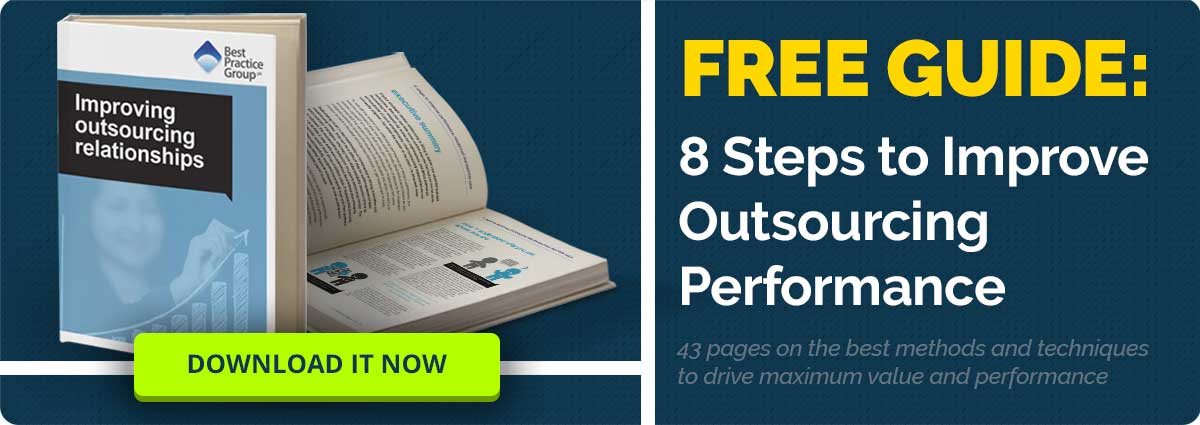
Since Interserve fell into its pre-pack administration on 15th March, there have been many across the spectrum of suppliers and clients who have wondered what this actually meant for their relationships, projects and outstanding invoices. After all, the aim of a pre-pack administration is to give an organisation the capacity to stand up, wipe itself clean of all its debts and start anew as if nothing had happened. So, what does the Interserve administration mean for those who used to rely on the company and what could it mean to you if your strategic partner goes the same way?
What is a Pre-pack Administration?
A pre-pack administration deal is a backup plan devised before the demise of a company that might save jobs, and the future of projects and payments that are outstanding. As part of this deal, a buyer is sourced who may take on the assets of the company in the event that administration is needed. In return, the new company gets to choose which debts of the old company it will take on.
Interserve was a multi-billion pound international company, but it couldn’t find its way beyond its debts (reported to be somewhere in the region of £640m), despite plenty of public sector contracts and financial emergency planning.
Therefore, on 15th March, EY (Ernst & Young) were instructed as administrators of Interserve PLC. By 18th March, a deal was concluded that sold the business to Interserve’s lenders and formed Interserve Group. This group contained all of the assets of the PLC, along with the debts it wished to take on. All of Interserve’s operating companies and subsidiaries pretty much continued as before; employees, suppliers and clients were assured that operations would continue as normal.
To all intents and purposes, this means that the company’s bank debts were wiped clean. However, the organisation’s shareholders lost every penny they had invested in the company. While pre-packed administration deals are not new, the idea of them being used on this scale can be unnerving. We’ll have to see how the wider stock market investors react to the news, because it is likely to give investors considering putting their money into shares in other major contractors, serious pause for thought.
How Healthy are the Finances of the New Company?
In the run up to March, Interserve reported that its suppliers had trouble getting credit insurance, meaning Interserve had to pay some of them upfront if services were to continue. These commercial issues may well hamper the company’s new incarnation, as it’s reported by an analyst in Building magazine that “The balance sheet looks OK now, but I’d still assume clients and supply chains will approach Interserve with a heightened degree of due diligence.”
According to the same article:
“Following the pre-pack administration, the firm is no longer listed on the stock market, meaning it does not have to provide up-to-date financial information. However, the business has made clear that, in broad terms, the result of the pre-pack has been to execute anyway the refinancing package proposed in February by Interserve management following discussion with its banks – albeit with former shareholders losing everything, rather than (just) 95%. The de-leveraging plan was that by swapping approximately £485m of debt to the banks for ownership of the business, the business’ net debt would be reduced to no more than twice its operating (or, technically, EBITDA) profit – which last year was £93m before exceptional items. Most of what debt remained was to be ringfenced within Interserve’s profitable formwork business, RMD Kwikform, and a further debt facility of £110m was to be created to give the group enough working capital to manage cash inflows and outflows.”
The reality reported later in the Building article seems to be that despite being able to write off much of its debts, Interserve is still likely to be “among the more indebted contractors in the sector.” So, it’s not completely out of the woods yet.
Five Steps to Consider Taking Should your Supplier Enter into a Pre-pack Administration
Services should, in theory, continue to be provided at the levels agreed in your contract. This is, after all, a primary purpose of pre-packed administration – to alleviate the debt and enable the company to continue on to service its project and employer commitments. However, given the financial pressures providers in a similar situation may still be under, it is likely you will see significant personnel changes, if you haven’t already.
What follows are our five initial steps to take should you find yourself in this situation:
1. Review your exit management plan
Make sure that if it wasn’t up to date, that you get it up to date within the next 30 days. With the state of the market these days it pays to be cautious, to hope for the best and plan for the worst. That’s why it makes sense to have a strategic partner back-up plan, alternative firms you can approach, as carefully selected as the first one, kept up to date with progress so minimising succession planning gaps, ready to be activated should the worst happen.
2. Meet with senior management within the next 30 days
Seek assurances key personnel will remain in your service delivery team, asking for the supplier’s contingency plans where they will not. Continuity is important in such circumstances, that you are able to retain the services of the team members you rely on most. Often it’s just a few familiar faces that drive the project or service forward, that are the go-to people. Losing them to the market would result in an expensive gap to fill and a considerable number of man-hours of training to bring any new resources up to speed.
3. Book in weekly performance meetings with your supplier for the first 12 weeks, reducing frequency thereafter
In times of trouble your Intelligent Client Function (ICF) team come into their own. The on-going insights you should gain from their closer relationship with their supplier counterparts on the ground will help you to be forewarned of impending service and/or key staff changes. If you have not already formed a competent ICF team for your relationship, consider doing so and having a clear strategy and mobilisation process at the earliest opportunity, no matter whether your supplier is struggling or not. This multi-disciplined group of individuals, tasked with liaising with your suppliers and earning their confidence should be your eyes and ears, identifying issues while they’re still on the horizon so you have more time to deal with them.
4. Request quarterly management accounts to be provided within 60 days of each quarter end
You may not get these, but if you can, it will help to assure you that the supplier’s business is on the right track. Should it not be, this should be something that you bring up at the weekly performance meeting, seeking escalation with the supplier’s senior management team at least every 30 days until you have evidence that financial matters are going in the right direction. Much like the purpose of the ICF team, visibility of the issues in as much clarity as possible provides you with the time and the insight to deal with them before they have a chance to become overwhelming.
5. ExploreTheMarket.com
Have your ICF team explore the market and make preliminary enquiries as a form of insurance/assurance in the event the supplier does not recover its financial position in the coming months. This is a vital step as it’s important to appreciate what may have changed in the market since your last procurement round, what a reasonable cost for service provision is currently and whether technology or processes have advanced to change the expectations you may have of a new supplier.
Conclusion
The newly formed Interserve Group has been reported to be in good financial shape now that it’s shed much of the debts of its former incarnation. Its employees, suppliers and clients have all been informed that all is well, and it’s business as usual. However, what the future has in store for this fledgling OAP of a company only time will tell. Be assured we will be keeping an eye on things and reporting on what the market and media have to say. If your suppliers find themselves in similar difficulties then the five steps set out above should give you the means to attain some of the fundamental insights you’ll need to steer your organisation through those rocky waters.
Photo credit: iStock


